Part 2 : Tower of Culture
In the Tower of Culture, first we will compare the original and the translated versions of picture books and literature. We will examine whether internationally acclaimed Japanese children's books – such as works by authors and illustrators who received Hans Christian Andersen Awards and works that won awards at the Bologna Children's Book Fair – have been translated and published throughout the globe, as well as whether picture books and literature that have long been familiar to Japanese readers have been accepted and loved by children in foreign countries as well. We will also look at whether there are any differences in illustrations between the originals and translated editions. We will focus on works that are of particular interest in comparing the original and the translated versions from various perspectives.
Next, we will explore how Japanese folktales have been accepted in overseas countries. Aside from Japanese children's books translated and published in the postwar period, which are recorded in the Translation DB, we will trace the history of the translation and publication of Japanese folktales, referring to their translations by foreign advisers who were living in Japan at the end of the Edo Period and during the Meiji Period, and their publication by Japanese painters living in France in the early 20th century. This will be followed by a description of the unique characteristics found in translated versions, including various Japanese folktales told in various overseas countries, illustrations and stories slightly differing from those in the original to meet local culture and customs. Focus will also be given to translated works in which the influences of Japanese animation have been seen. Lastly, we will introduce some Japanese folktale chirimen bon (crepe-paper books) from the ILCL collections.
< Chapter 1 > Picture Books
Picture books by Michio Mado
Many works by the poet Michio Mado have been translated and published in the United States, South Korea and Taiwan. In 1992, “Dobutsutachi: Mado Michio shishu” (The Animals: Selected Poems by Michio Mado) (No.104), which contains his famous children's song “Zo-san” (Little Elephant), was published both in Japan and the United States. This poetry book was highly acclaimed in Horn Book Magazine and other book-review journals, bringing him international recognition. As a result, he was granted the 1994 Hans Christian Andersen Award for Writing. In 1998, his “Fushigina poketto: Mado Michio shishu” (The Magic Pocket: Selected Poems) (No.105) was published both in Japan and the United States. In the South Korean version (No.107) of “Kirin-san” (The Giraffe) (No.106), for which he won the Fourth Japan Picture Book Award in 1998, there were some differences from the original. For example, variations in character fonts were added whereas the original had a uniform font, and small pictures were newly added to the translated version.
“Dobutsu-tachi: Mado Mitsuo shishu” and “Fushigina poketto: Mado Michio shishu” were illustrated by Mitsumasa Anno, and “Kirin-san” by Naoko Minamizuka.
The Hans Christian Andersen Award, also known as the “Little Nobel Prize,” was established in 1953 by the International Board on Books for Young People (IBBY). The international award is given to living authors and illustrators biennially in recognition of their outstanding contributions to children's literature.
About the author and illustrator:
Michio Mado (1909 - 2014), a Japanese poet, won the 6th Noma Prize for Juvenile Literature in 1968 for his work “Tempra piri-piri” and the 43rd Art Encouragement Prize in 1992 for “Mado Michio zen-shishu.” Among his representative works, “Zo-san,” “Fushigina poketto” and “Yagi-san yubin” have long been familiar to Japanese children in the form of children's songs. In 1994, he became Japan's first winner of the Hans Christian Andersen Award for writing.
Naoko Minamizuka (1949 - ) received the 2nd Akai Tori Illustration Award in 1988 for “Usagiya no himitsu” (story by Naoko Awa). Her representative works include “Yasashii tampopo” and “Usagi no kureta baree shuzu” (both of which were written by Naoko Awa).


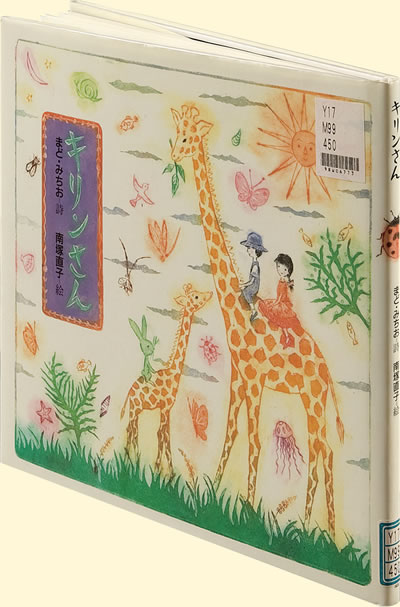

“Suho no shiroi uma” (Retold by Yuzo Otsuka and illustrated by Suekichi Akaba)
This picture book won the 15th Sankei Juvenile Literature Publishing Culture Award in 1968; the story has been included in a Japanese school textbook and is widely known in Japan. This book was translated and published in eight countries and regions: the United Kingdom (No.109), Pakistan (No.110), South Korea, Taiwan, Finland, France, the United States, and Mexico. In 1975, the Brooklyn Museum of Art Award was granted to the American version of this picture book. Most of its translated versions carry cover art featuring a scene of Suho encountering a white colt. In the U.K. version, however, an image of the adult horse being taken care of by Suho appears on the cover.
About the illustrator:
Suekichi Akaba (1910-1990) was a published author and an illustrator of children's books, who was highly acclaimed for his picture books and illustrations strongly influenced by traditional Japanese painting. In 1965, he received the 12th Sankei Juvenile Literature Publishing Culture Award for his works titled “Momotaro” (retold by Tadashi Matsui) and “Shiroi ryu kuroi ryu” (translated by Hisako Kimishima), as well as the 24th Shogakukan Children's Publishing Culture Award for “Houman ike no kappa” (story by Hatoju Muku) in 1975. In 1980, Akaba became Japan's first winner of the Hans Christian Andersen Award for Illustration.
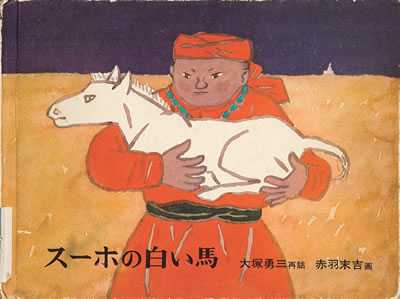
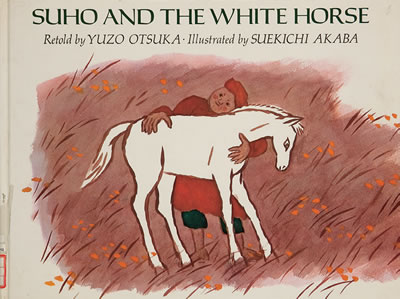
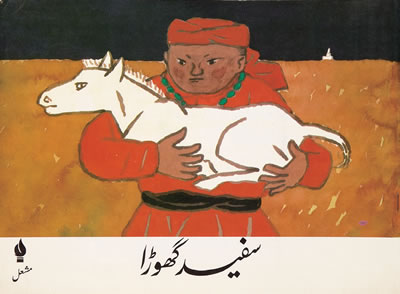
“Marui chikyu no maru ichinichi” (Written by Eric Carle and others, and edited by Mitsumasa Anno)
This is a picture book co-published in 1986 in Japan, the United States and the United Kingdom, based on a plan of Japanese illustrator Mitsumasa Anno. Nine world renowned picture story authors from eight countries participated in the production of the picture book, including Eric Carle, famous for his book “The Very Hungry Caterpillar”; Raymond Briggs, renowned for his book “The Snowman”; and Akiko Hayashi. With the Cold War era as its historical background, the picture book was published under the theme of the importance of “peace” in the Earth, the only life-bearing planet in the universe. Authors from the former Soviet Union and China were also involved in the production. In 2001, the picture book was introduced in Taiwan. In Japan, it appeared in school textbooks. The picture book depicts children in eight different countries over the course of the same day on January 1, every three hours after 0:00 GMT. Its double-page spread, which is divided into eight frames to describe children in eight countries, enable readers to learn at a glance what they are doing at the same hour.
About the author and illustrator:
Mitsumasa Anno (1926 - 2020) was a Japanese published author and illustrator of children's books. His works have enjoyed a worldwide reputation since his debut. In 1975, he received the Kate Greenaway Medal commendation and Japanese Education Minister's Art Encouragement Prize for New Artists for his book “ABC no hon” (Anno's Alphabet); in 1977, the Golden Apple Award at the Biennial of Illustration Bratislava for “Aiueo no hon”; in 1978, the first prize for graphic excellence at the Bologna Children's Book Fair for “Anno Mitsumasa no gashu” (The Unique World of Mitsumasa Anno); and in 1984, the Hans Christian Andersen Award for Illustration.
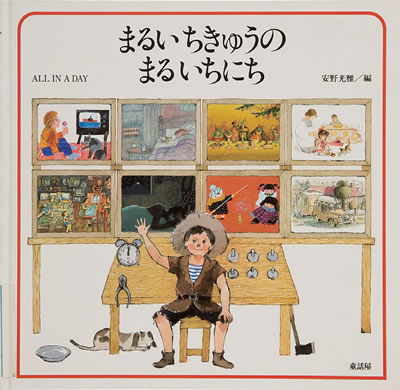


“Hiroshima no pika”(Pictures and story by Toshi Maruki)
This picture book about the atomic bombing of Hiroshima received the Grand Prize at the Third Nippon Picture Book Award in 1980. It was translated into 13 languages in 12 countries: Spain (No.115), China (No.116), the United States (No.117), the United Kingdom (English) (No.118), Austria (No.119), France (No.120), the United Kingdom (Welsh), Italy, Netherlands, Greece, Sweden, Denmark, and Norway. Although the publication of the work in the United States, the country that dropped the atomic bombs on Japan, stirred up controversy, the Mildred L. Batchelder Award was granted to the publisher of the American version of the book in 1983. In the United States and the United Kingdom, two countries sharing the same English language, the book has been introduced with different titles: “The Hiroshima Story” in the U.K. version, and “Hiroshima no Pika” in the U.S. version. In the latter, the title looks the same as the original, but has a different meaning; the English term for “No” is used instead of the Japanese word “no” (meaning “of”) in the original.
The Mildred L. Batchelder Award was established by the American Library Association (ALA) in 1966. The Award, named in honor of Mildred L. Batchelder, a renowned librarian of the Association, is an award granted to publishers that introduced high quality foreign language children's books to the United States.
About the author and illustrator:
Japanese artists Toshi Maruki (1912 – 2000) and her husband Iri Maruki visited his hometown Hiroshima immediately after the atomic bombing of Hiroshima in August 1945. Beginning in 1950, the two worked on the painting of the screens “Genbaku no zu” (the Hiroshima Panels) and toured the world campaigning for nuclear disarmament and world peace. In 1953, Toshi and Iri Maruki received the World Peace Culture Prize, and in 1971, the Golden Apple Award at the Biennial of Illustration Bratislava was granted for “Nihon no densetsu,“ a five-volume book (story by Miyoko Matsutani) illustrated by the two artists.
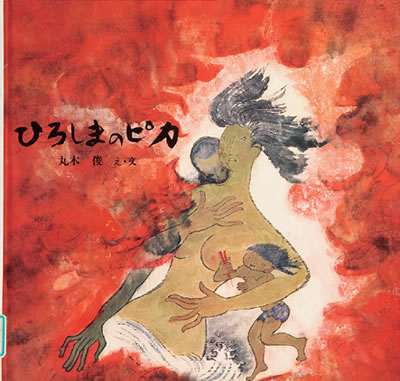






Picture Books by Chihiro Iwasaki
Picture books created by Chihiro Iwasaki have been introduced by the publisher Shiko-Sha to overseas countries from early on (the 1960s).
Most picture books usually depict the “world of emotions and feelings” through a combination of story and illustration. The German version (No.122) of her picture book “Kotori no kuru hi” has additional sentences, which the original does not have, to explain the story line for the next page. This may mean that illustration, which appeals to readers' sense, is easily accepted by foreign readers, but it is necessary to make some changes to the sentences of the original to enhance foreigners' understanding.
In 2008, two picture books were jointly published in Vietnam by the Chihiro Iwasaki Memorial Foundation and a Vietnamese publishing company, aiming to support the victims of Agent Orange during the Vietnam War. One of the two works is “Kasan wa orusu”, which was written by a Vietnamese author and illustrated by Chihiro Iwasaki. The Japanese translation (No.123) of this picture book was published in Japan in 1972, and in 2008, the book came to be published in Vietnam (No.124), where the story was written.
About the author and illustrator:
Chihiro Iwasaki (1918-1974) created many picture books with a children's theme. They include “Ame no hi no orusuban” and “Tonari ni kita ko.” “Kotori no kuru hi” received the First Prize for Graphic Excellence at the Bologna Children's Book Fair, earning international acclaim.
The Bologna Children's Book Fair was the only annual trade fair dedicated to children's books in the world. The fair launched in 1964 has also held an illustration exhibition since 1967, which is open to anyone who draws the illustrations of children's books.
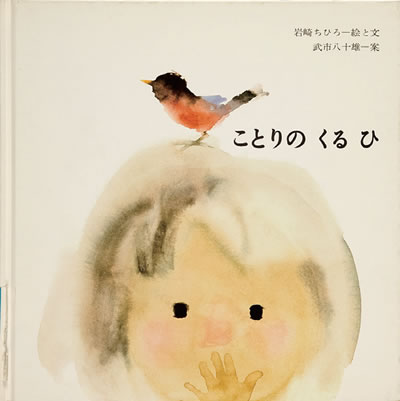

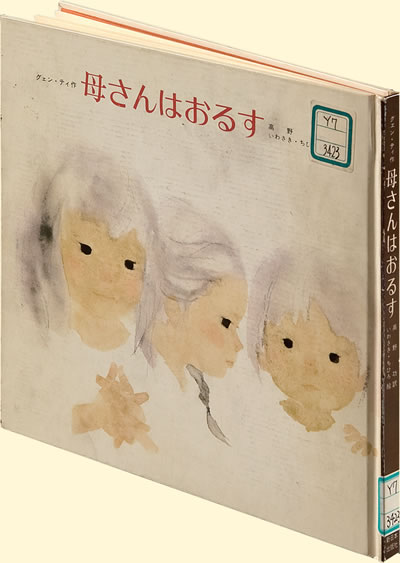

“Kuishinbo no Hanako-san”(Written by Momoko Ishii and illustrated by Chiyoko Nakatani)
For more than 40 years since its publication in 1965, this picture book has long been familiar to Japanese readers. The illustration on the cover is very attractive, and the book has enjoyed popularity as a book to be read to a child.
Between 1991 and 1998, the picture book was translated into seven languages including English, in countries such as India and Pakistan, and Taiwan in 2008.
When the original and the translated versions ( Nos. 126, 127, 128, 129, 130 and 131) are compared, we can see beautiful titles written in different languages. Only the Urdu translation (No.126), whose title reads from right to left, has Hanako-san appearing in the reverse direction on the cover.
About the author and illustrator:
Momoko Ishii (1907 - 2008) won the 1950 (1st) Japanese Education Minister's Art Encouragement Prize for her picture book “Non-chan kumo ni noru.” In 1953, she received the Kan Kikuchi Award for her outstanding contribution to children's literature. She also translated many foreign children's books, such as “Kuma no Pooh-san” (Winnie the Pooh), and worked as a children's literature critic.
Chiyoko Nakatani (1930 - 1981), a published illustrator of children's books, worked with the author Eriko Kishida to create many picture books, including “Kaban-kun.” Her book “Sugan-san no yagi” (story by Eriko Kishida) was published in the United States as well. In 1974, she was granted the Grand Prize of the 21st Sankei Juvenile Literature Publishing Culture Award for her work “Kaette kita kitsune.”
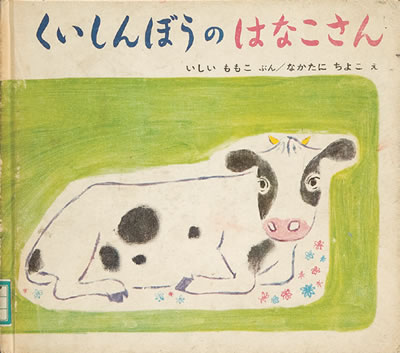
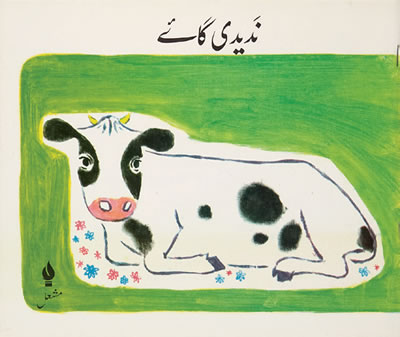
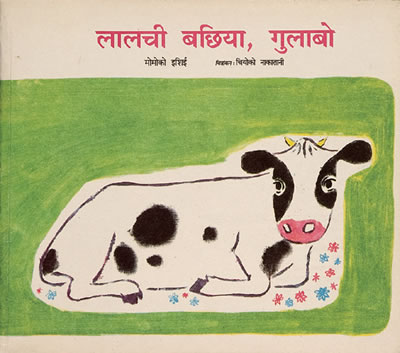
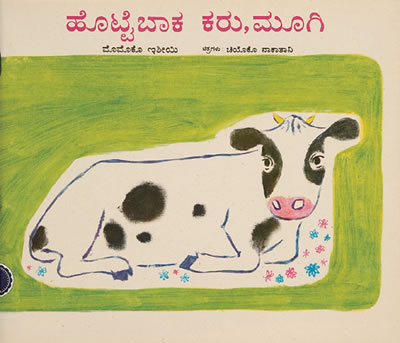
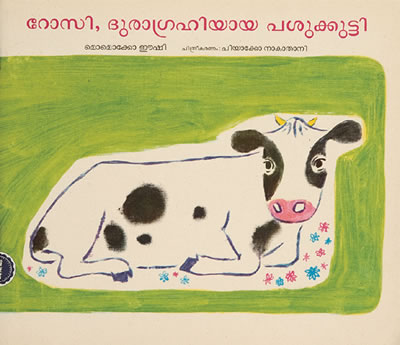
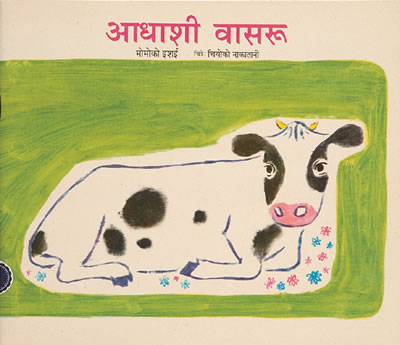
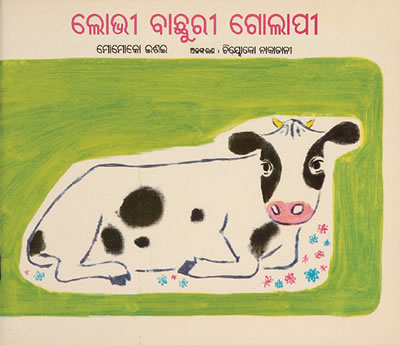
“Ofuro daisuki” (Written by Kyoko Matsuoka and illustrated by Akiko Hayashi)
In 1983, this picture book received the 30th Sankei Juvenile Literature Publishing Culture Award for Fine Arts. Since its publication, it has sold more than a million copies in Japan. The picture book has also been introduced to eight foreign countries: South Korea, China, Thailand, the United Kingdom (No.133), the Netherlands, the former Soviet Union (Moldovan language), France (No.134), and the United States.
All seven of the translated versions owned by the ILCL have the same cover art as the original. In the editions published in the United Kingdom, the Netherlands and the former Soviet Union (Moldovan language), however, there is no bathtub cover in the illustration that appears at the beginning of the book. This is because a bathtub cover looks strange in those countries, where there is no custom of covering the bathtub. In the editions published in South Korea, China, Thailand and France, in contrast, the same illustration as the original was used, with the bathtub cover depicted.
About the author and illustrator:
Kyoko Matsuoka (1935 - 2022), a children's literature specialist, translated many children's books, including “Yukaina Henrii-kun shiriizu” (the Henry Huggins series) and “Padinton no hon” (Paddington Series). She was also an author of children's books, and won the 16th Sankei Juvenile Literature Publishing Culture Award in 1969 for her work “Kushami kushami ten no megumi.” She contributed to the foundation of the Tokyo Children's Library in 1974 and served as the director of the library.
Akiko Hayashi (1945 - ) received the Second Japan Picture Book Award for her work “Kyo wa nan no hi?” (story by Teiji Seta) in 1979 and the 21st Kodansha Publication Culture Award for Picture Books in 1990 for “Kon to Aki.” She has produced many picture books, including “Asae to chiisai imouto” (No.224).
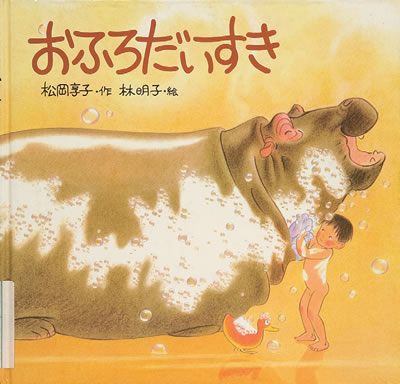
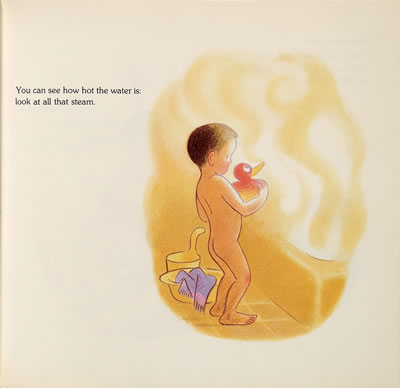
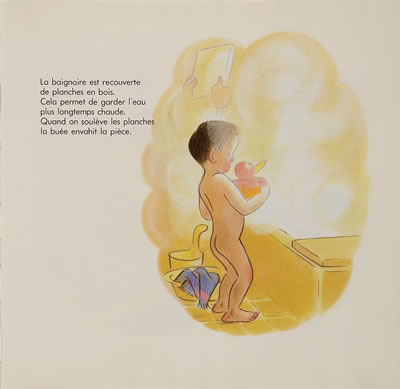
For copyright reasons, images of some books are not available in this electronic exhibition.
- TOP
- Part 2 Tower of Culture
- Picture Books

